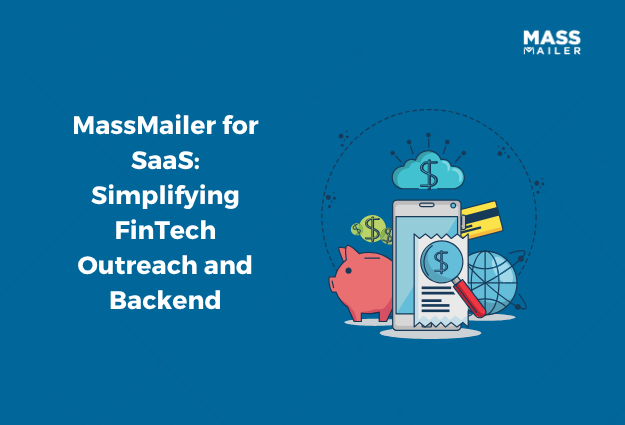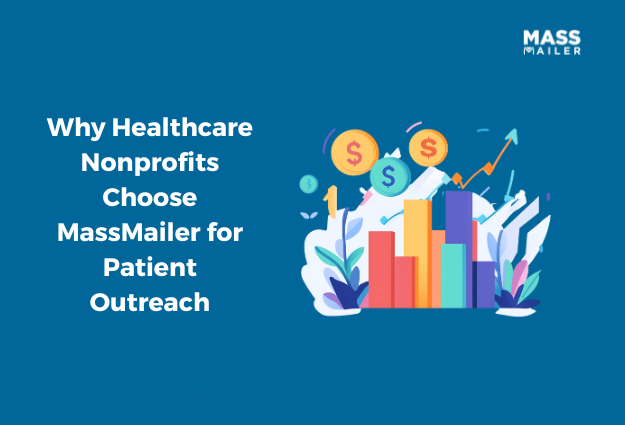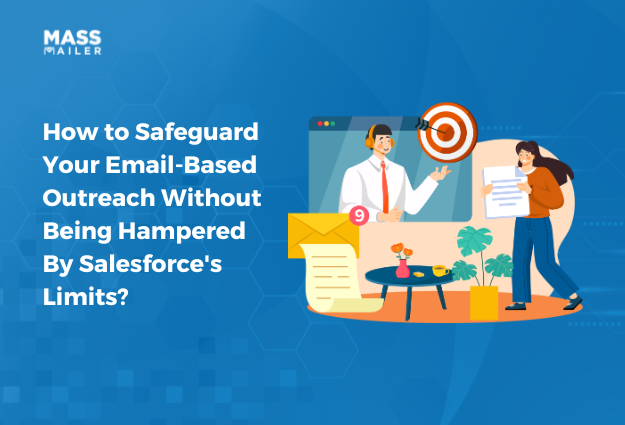Table of Contents
Introduction
All non-profit organizations, no matter which sector they belong to, rely on a strong communication infrastructure to function effectively. The core of this communication infrastructure is usually a CRM.
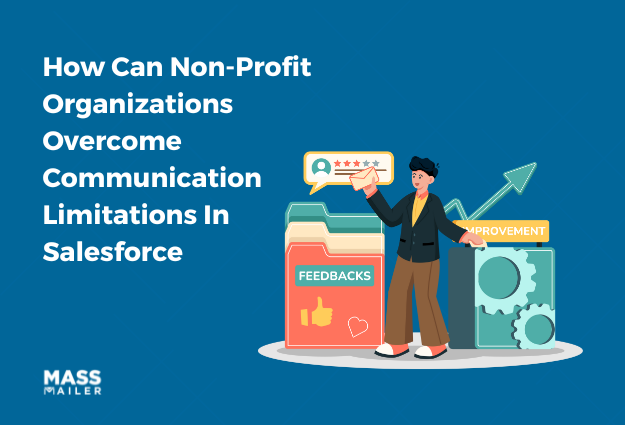
Now, if it’s Salesforce, it’s already a very solid platform to manage and track all essential communication. That said, as powerful as its capabilities are, when volumes are high, the limitations of this platform soon become a hurdle.
There are daily send limits, and storage can get expensive, and its tracking features are limited. This is where a Salesforce-native email solution like MassMailer can make a difference.
This blog will cover the most common Salesforce email challenges non-profits like the Producers Guild of America (PGA) have faced and how MassMailer helped overcome these challenges.
What Are the Most Common Challenges Non-Profits Face When Using Salesforce?
As a CRM, Salesforce is as good as they come. That said, it does have its limitations, especially when you consider the unique circumstances of a non-profit.
Daily Email Limits
If you are a non-profit, you often have to communicate with thousands of members, donors, or volunteers. You might also have to create large-scale marketing campaigns to attract new folks or to raise awareness.
Salesforce, unfortunately, enforces a strict limit of 5,000 emails per day per organization. If you exceed this email, deliverability comes to a grinding halt. On the bright side, there is no limit on the number of emails you can send within the organization, but this is a hurdle nonetheless.
Storage Consumption
Salesforce offers a limited storage of 10GB for files for most of its editions. If you hit this limit, you either have to delete existing records or purchase additional storage to store additional information.
For non-profits where operational costs are a huge factor, this is a major limitation. When sending out large volumes of emails, the tracking data can eat up this allocated limit in no time.
Limited Tracking and Analytics
Natively, Salesforce offers limited real-time tracking and analytics, which will limit your ability to improve the performance of your email campaigns. This issue compounds when you have to run multiple camps simultaneously and are limited by reporting capabilities.
How Do These Challenges Impact Non-profits?
These issues create real risks for non-profit organizations:
- Reduced engagement: Without tracking, you don’t know who is interested, making it harder to attract and build new relationships.
- Higher costs: Higher storage needs increase Salesforce expenses.
- Missed opportunities: Send limits and delivery delays can prevent you from capitalizing on donor interest or event deadlines.
When communication is a non-profit’s lifeline, these challenges can limit growth and weaken relationships with members and supporters.
Case Study: How a U.S. Membership Organization Solved These Problems
To understand how these issues play out in practice, let’s look at how one large U.S.-based membership non-profit addressed them.
The Issues They Were Dealing With
Like many organizations, the PGA relied on Salesforce to manage thousands of member records and communications. But as their programs and events grew, they began to feel the strain of Salesforce’s email limits, like:
Storage Limits
More than half of their Salesforce storage was filled with email records alone. Every time they sent a campaign, Salesforce stored duplicates of the message for each recipient. For a non-profit that needed to keep costs under control, constantly bumping against storage limits became a financial and operational problem.
Daily Send Limits
And, of course, there was the pressure of volume. During peak times, such as award seasons, the team was juggling several campaigns a week, and at times, the daily send limits caused significant delays.
Campaign Management
At times, the non-profit often needed to run “second-wave” sends, i.e, follow-ups to the same campaign when new members qualified. Salesforce didn’t give them a simple way to do this. Instead, they had to clone campaigns, which scattered analytics across multiple records and made it harder to track what was working.
Ad Hoc/One-off emails
Their staff occasionally needed to send one-off emails to specific members or groups. The only way to do this, instead of starting another mass campaign, was to use a test send feature, which didn’t log the activity into member records. That meant losing valuable data about who received what.
What Changed With MassMailer
When they brought in MassMailer, things started to shift. First, being a native Salesforce solution, they could continue sending their communication from within Salesforce.
MassMailer also allowed them to segment audiences more effectively. Instead of sending mass emails all the time, they could filter members by region, interests, or past participation for their one-off sends.
Tracking gets improved as well. The team could see opens, clicks, and bounces logged directly into Salesforce. Bounce reports were especially useful because they flagged outdated emails, helping staff keep records accurate without extra manual work.
More importantly, they were no longer restricted by the 5,000 email daily limit, which meant critical communication kept going out.
The Results
The non-profit’s communication process became more streamlined and effective:
- Campaigns could be managed entirely within Salesforce
- Members received timely, targeted updates
- Staff had actionable data to guide follow-ups
- Administrative overhead dropped, freeing time for other priorities
PGA continues to use MassMailer as its standard tool for high-volume communication, particularly during busy seasons.
|
Also Read: Salesforce Email Deliverability Best Practices for 2025 |
Streamline Non-Profit Communication with MassMailer
If your non-profit uses Salesforce, it alone may not give you everything you need to manage your communication. Over time, its limitations can reduce engagement, increase your costs, and leave your team scrambling to manage communication at critical moments.
MassMailer is built specifically to overcome all of the above issues. It gives your organization the ability to send unlimited emails, track every interaction, and manage campaigns directly from Salesforce without expensive add-ons or workarounds.
If this is the solution you were looking for, start your 15-day free trial with MassMailer today.
FAQs
Q:How does MassMailer differ from tools like Mailchimp or Constant Contact?
A:Unlike standalone platforms, MassMailer works natively inside Salesforce. That means you don’t have to move data in and out of different systems. Your campaigns, tracking, and member data all stay in one convenient place.
Q:Does using MassMailer increase Salesforce storage costs?
A:One of MassMailer’s key advantages is that it reduces storage consumption by avoiding the duplication issues Salesforce creates when sending campaigns. This helps non-profits control costs while maintaining a complete campaign history within Salesforce.
Q:Can non-profits send personalized emails with MassMailer?
A:MassMailer allows you to customize templates with member-specific details like names, regions, or event participation. It also offers advanced segmentation, so you can personalize across different time zones, languages, and member groups without running into the usual limitations of Salesforce email.
Related Blogs
About the Author

Siva Devaki 
Siva Devaki is the founder of MassMailer Inc., a tool that helps Salesforce users optimize email marketing. A passionate advocate for email marketing, Siva writes and hosts podcasts on the topic, sharing insights to help businesses drive revenue and enhance customer engagement through Salesforce email automation and tracking.

 View Presentation
View Presentation